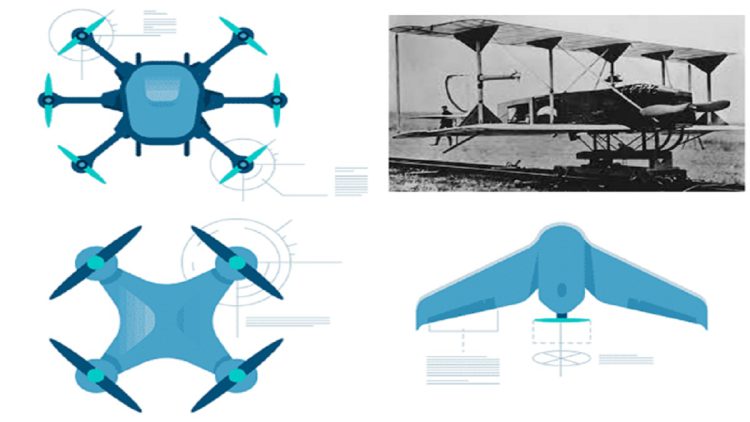In modern times, Unmanned Aerial Vehicles (UAVs) seem to be proliferating in all walks of life. From aerial photography to military reconnaissance and from medicine delivery to search and rescue missions, operators have found innovative ways to utilize this modern gadget-cum-flying-machine in all walks of life. The idea of using autonomous or remotely piloted aerial vehicles was initially perceived in the context of military operations but miniaturization, mass production, and common availability of its parts has resulted in even the non-state actors get hands on it. So, what exactly is the history and what are the development trends in this field?
Although the history of UAVs can be traced back to at least a century when a balloon bomb was invented by Austrian artillery lieutenant Franz von Uchatius, it was not until early 1990s that UAVs successfully proved their worth in combat roles. In 1991 Gulf War, it was widely used for naval gunfire support. Afterwards, in 1999, the UAVs were used to relay real-time video over Kosovo. Military operations in Afghanistan in 2001 marked the formal debut of the American-built Hellfire-carrying Predator UAV; a UAV that could provide sustained sensor/shooter presence, giving commanders new levels of recognition, tracking and target interdiction capabilities which were once considered impossible. Subsequently, all militaries around the world embarked on their own UAV and Remotely Piloted Vehicle (RPVs) programs and have formally inducted these in their arsenals. Sensors (like cameras, thermal imaging sensors, electro-optical sensors, etc), missiles, laser-guided munitions, and data streams like Link-16 were integrated on-board the aircraft. Few good examples in RQ-1 Predator and RQ-4A Global Hawk UAVs.
The use of UAVs is not limited to military applications only. A survey of the emerging trends of UAV applications on the internet show that these aerial vehicles are increasingly being utilized for applications such as building or powerlines inspection, forest firefighting, air ambulance, tracing and tracking, parcel or medicine delivery, video shooting, air-taxi roles, etc. Miniaturized UAVs are also being used for agricultural applications (like to spray pesticide on crops, monitoring of weeds and pests, geographical surveying of crops, etc). Ideas have also been proposed to equip these types of UAVs (generally small quadcopters or small-scale aircrafts) with high-definition multiple cameras and sensors for surveillance and monitoring applications or to capture heterogeneous data such as ultraviolet and thermal images. However, some constraints (like datalink capacities / processing limitations or weight of sensors vs. aircraft lift) are preventing these ideas from being materialized. To overcome the limitations of datalink capacities / processing limitations, research is on to develop new types of algorithms that rely on methods or ideas borrowed from Machine Learning, Artificial Intelligence, Big data, Internet of Things, edge computing and software-defined network. As far as the limitations of load-tolerance is concerned, techniques like formation flying, swarming, flocking, etc. have been proposed in the literature.
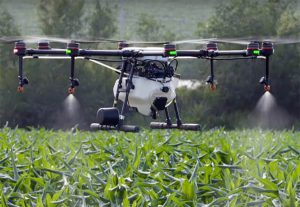
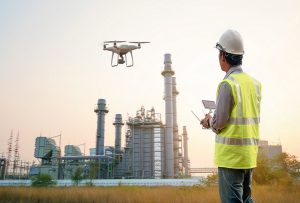
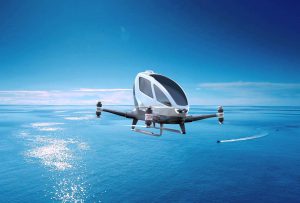
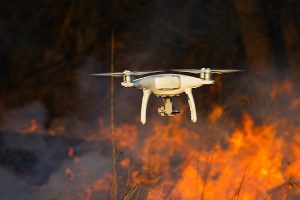
An emerging trend in applications of UAV in the battlefield is in the domain of Network Centric Warfare. Network-Centric Warfare (NCW) is defined as “an information superiority-enabled concept of operations that generates increased combat power by networking sensors, decision makers, and shooters to achieve shared awareness, increased speed of command, higher tempo of operations, greater lethality, increased survivability, and a degree of self-synchronization. The concept of network-centric warfare embodies a paradigm shift from the traditional way users get information through a centralized collection agency to users getting information directly, near real time, from the sensors in a network-centric manner.
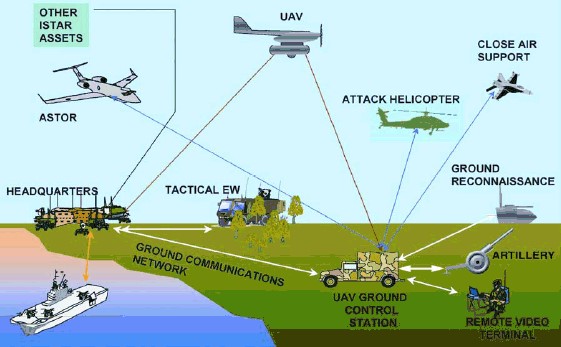
In this framework, besides being sensor and shooter platforms, UAVs will also serve as airborne communications nodes, providing mobile network coverage for maneuvering forces, not unlike a satellite. This relieves manned systems for greater value-added missions whilst providing a cost-effective means of maintaining reliable communications. However, military planners have acknowledged that it would be a nightmare to manage bandwidth and the sharing of information between the sensor, shooter, knowledge and command grids, especially with intensive imagery and video applications.
In a bid to indigenize, Pakistan has also made significant strides in the development of UAVs. Pakistan earned the distinction of being the fourth country in the world after the US, UK & Israel to have successfully deployed an unmanned combat aerial vehicle (UCAV) in an active operation in 2015. Prior to that, various types of reconnaissance and surveillance drones were also, and still are, in use by all three services (i.e. Pak Army, Pak Navy, and Pak Air Force). Foreign-built UAVs, acquired from friendly and allied countries also continue to serve in the arsenal of all three sister services in various types of combat and ISR roles. College of Aeronautical Engineering, being the cradle of Pakistan’s defense aviation technology is also playing an active role in the design and development of various types of UAVs. Both undergraduate and graduate students have not only proposed various types of new designs of UAVs but have also built and tested those designs; they have also competed with their UAVs in various national and international competitions and won various awards and prizes.
The growth in popularity of UAVs can be attributed to innovative military and civilian applications that are increasing day by day. Despite the limitations of UAVs in professional applications, their numbers are continuously on the rise and that trend is set to continue in the foreseeable future. As with every other emerging technology, this technology also needs to be embraced by everyone. Brave new world!
The author is a Research & Development (R&D) Coordinator at College of Aeronautical Engineering (CAE), National University of Sciences and Technology (NUST), Risalpur. He can be reached at jtariq@cae.nust.edu.pk.

